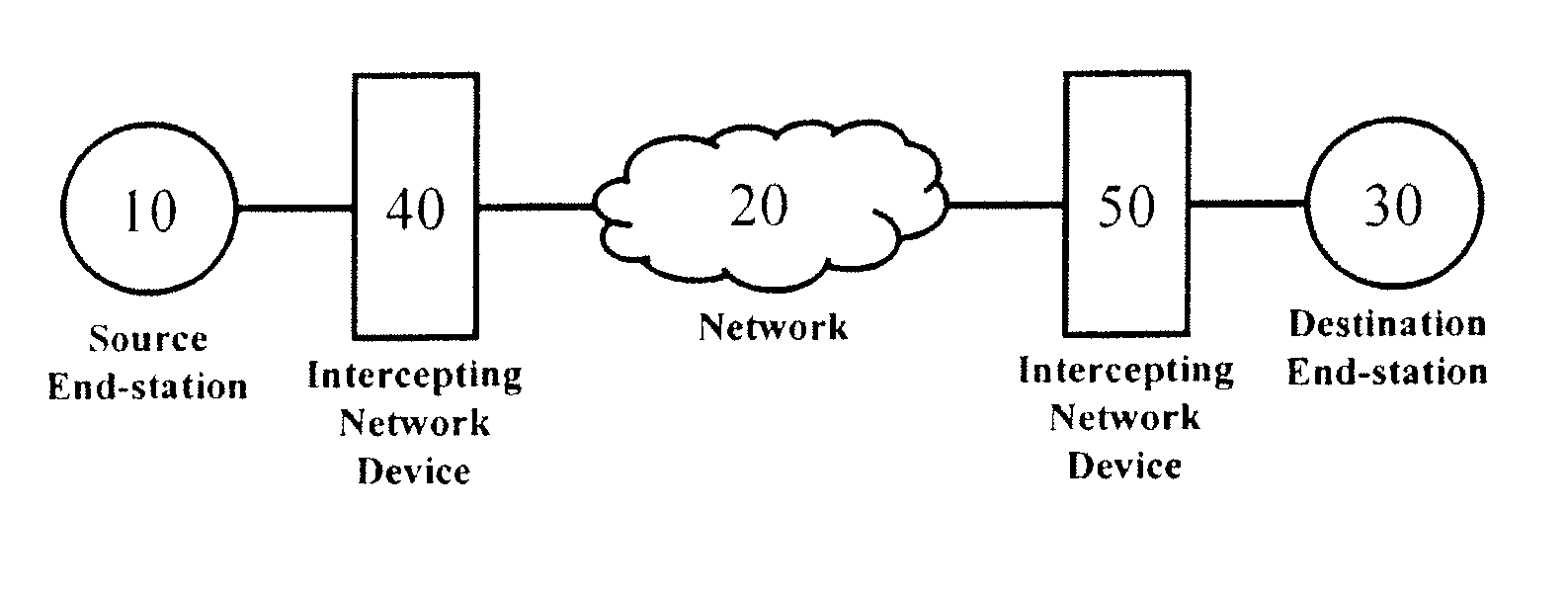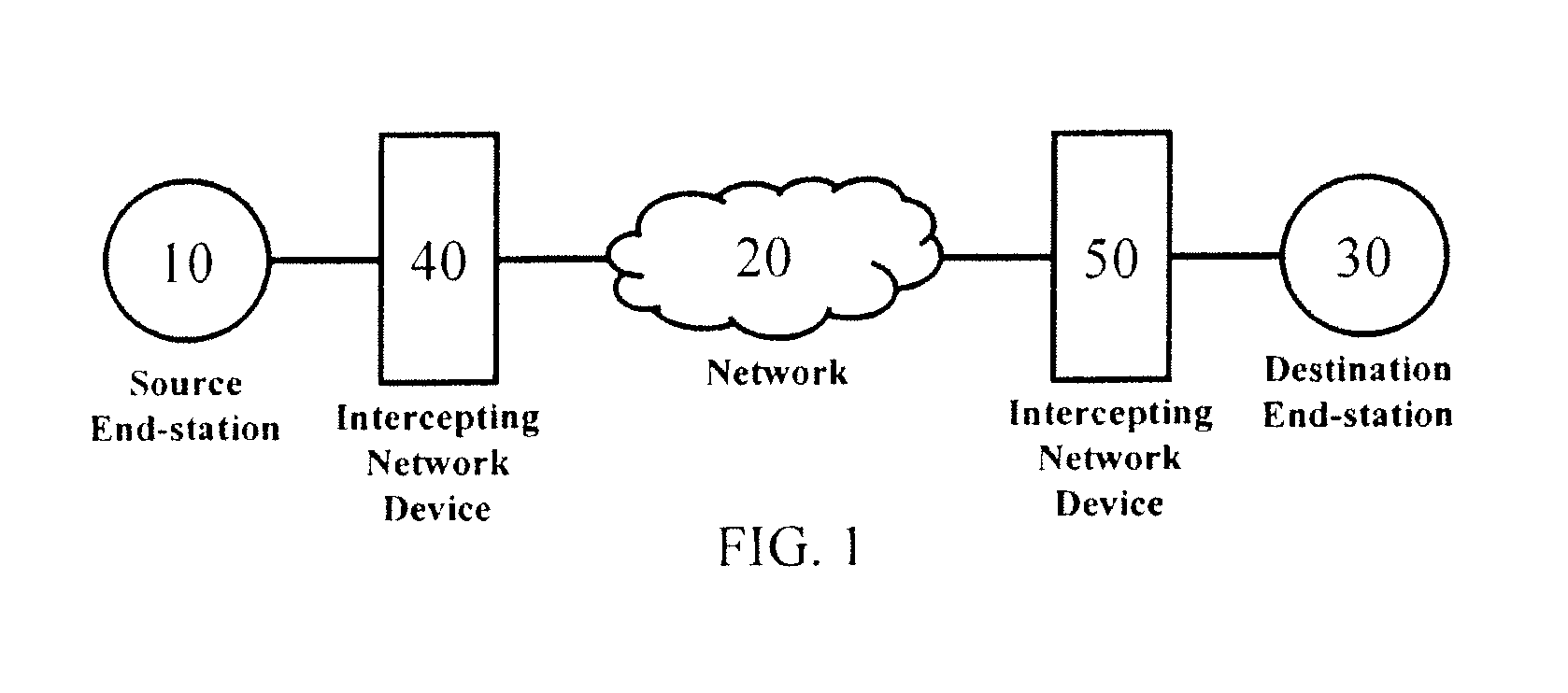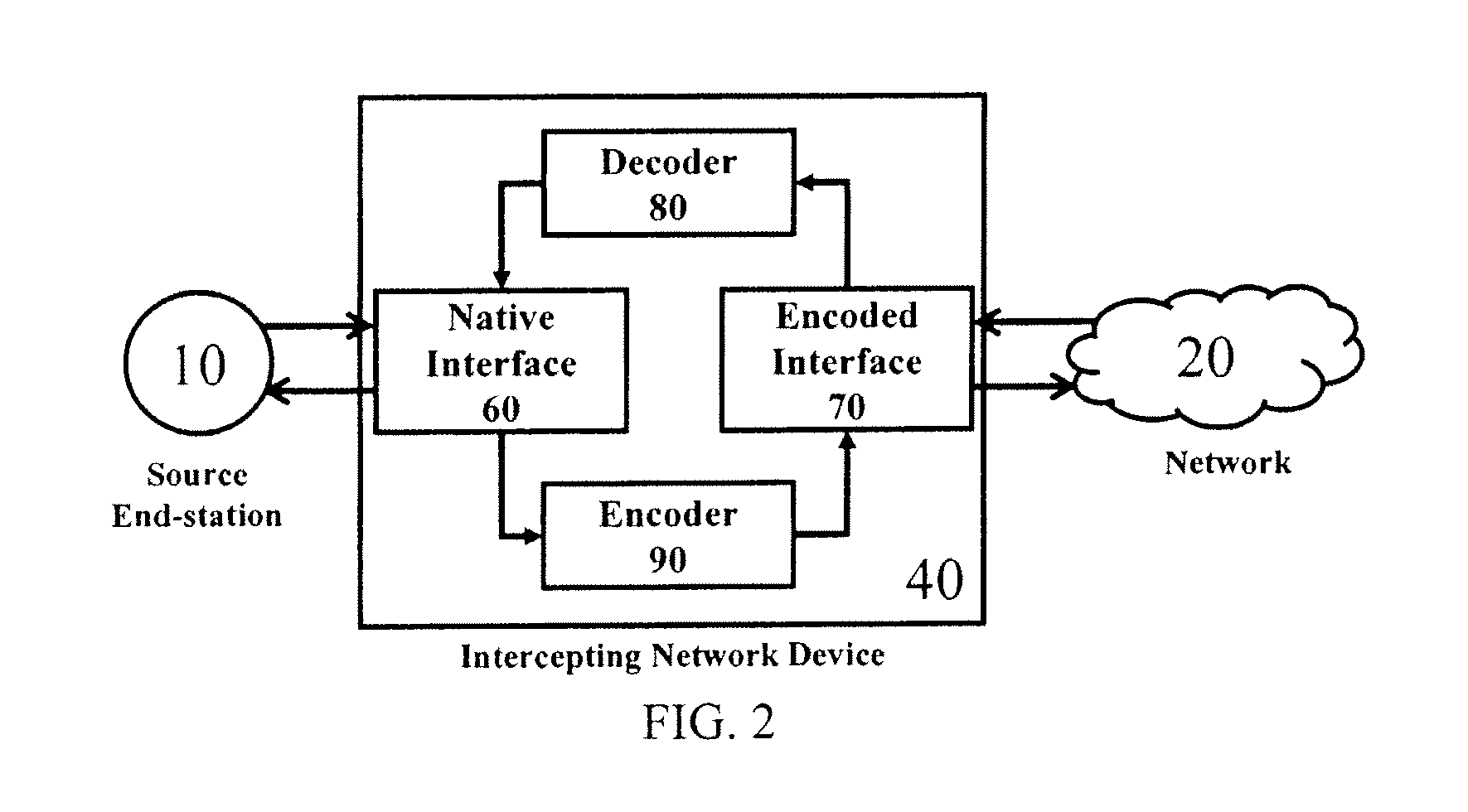Methods for achieving target loss ratio
a loss ratio and target technology, applied in the field of communication data networks, can solve the problems of non-trivial approach, inability to achieve perfect network performance, and inability to produce encoded duplicate packets, etc., to achieve the effect of reducing overhead, reducing overhead, and reducing the loss ratio
- Summary
- Abstract
- Description
- Claims
- Application Information
AI Technical Summary
Benefits of technology
Problems solved by technology
Method used
Image
Examples
Embodiment Construction
[0047]Although the invention will be described in connection with certain preferred embodiments, it will be understood that the invention is not limited to those particular embodiments. On the contrary, the invention is intended to cover all alternatives, modifications, and equivalent arrangements as may be included within the spirit and scope of the invention as defined by the appended claims.
[0048]FIG. 1 illustrates a network environment in which a source end-station 10 and a destination end-station 30 have applications which communicate using a standard protocol (generally, packet-based). This protocol is carried through a network 20 which can be, for example, the Internet or some other communications network. The end-stations 10 and 30 can be terminals, such as personal computers connected through a modem, local or wide-area networks, or other devices or systems having access to the network 20. For certain applications resident on the end-stations 10 and 30, better network perfo...
PUM
 Login to View More
Login to View More Abstract
Description
Claims
Application Information
 Login to View More
Login to View More - R&D
- Intellectual Property
- Life Sciences
- Materials
- Tech Scout
- Unparalleled Data Quality
- Higher Quality Content
- 60% Fewer Hallucinations
Browse by: Latest US Patents, China's latest patents, Technical Efficacy Thesaurus, Application Domain, Technology Topic, Popular Technical Reports.
© 2025 PatSnap. All rights reserved.Legal|Privacy policy|Modern Slavery Act Transparency Statement|Sitemap|About US| Contact US: help@patsnap.com



